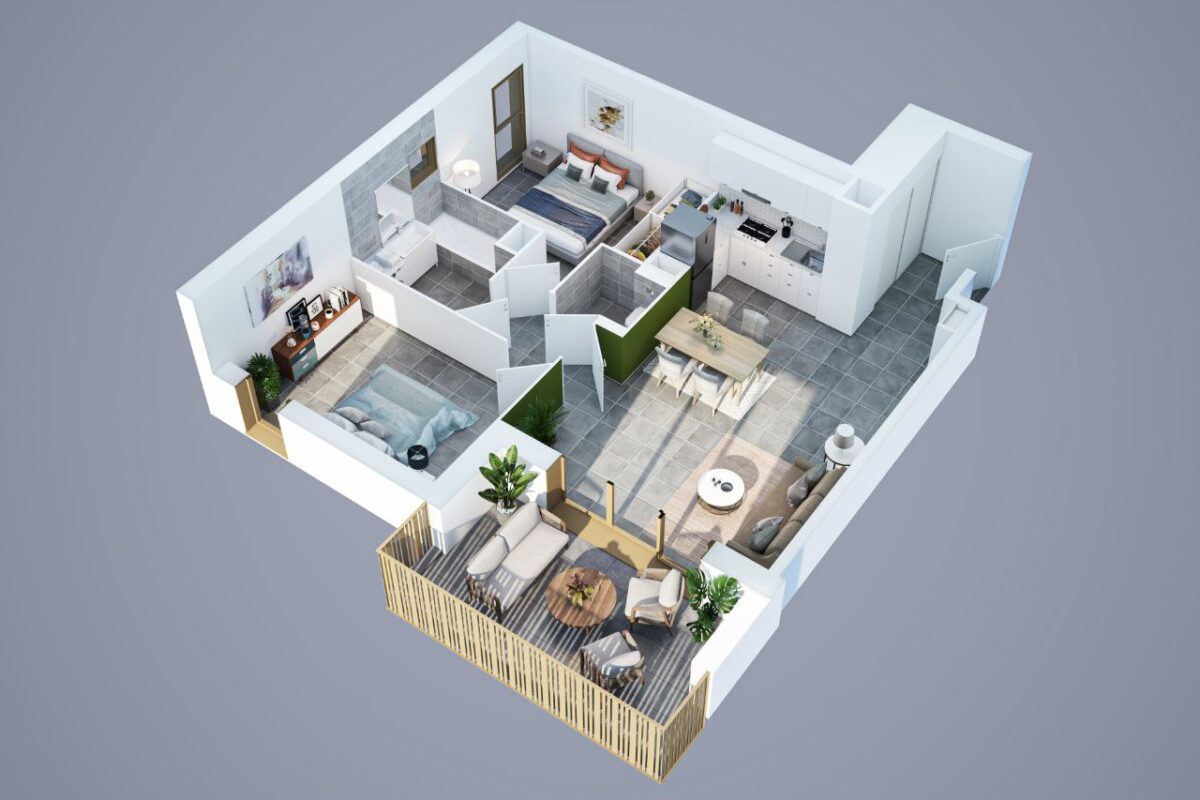In the architectural visualization industry, 3D renderings are invaluable for bringing concepts to life. However, even the most stunning renderings can fall short if certain pitfalls are not addressed. Whether you’re an architect, designer, or developer, ensuring that your 3D visualizations accurately represent your vision is crucial for client satisfaction and project success. In this blog, we’ll explore some common challenges in 3D rendering and how to overcome them to ensure your designs are portrayed precisely as intended.

1. Misalignment Between Concept and Final Rendering
One of the most common issues in 3D rendering is a disconnect between the initial design concept and the final output. This misalignment can occur due to unclear communication, lack of detail in the brief, or differences in interpretation.
Solution:
To overcome this, it’s essential to start with a detailed brief that includes all necessary information about the project. Regular check-ins between the design and rendering teams can also ensure that the rendering process stays aligned with the original vision. At Bricks Vista, we prioritize communication and collaboration to ensure that our renderings accurately reflect the intended design.
2. Poor Lighting and Shading
Lighting plays a critical role in how a 3D rendering is perceived. Poor lighting can make a space look flat or uninviting, while overdone shading can obscure important details.
Solution:
Investing time in proper lighting setup is key. Natural lighting should be simulated to match the actual environment, while artificial lighting should be used to highlight focal points without overpowering the scene. Bricks Vista’s expert team understands the nuances of lighting and shading, ensuring that every rendering we produce is both realistic and visually appealing.
3. Lack of Realistic Textures and Materials
Using generic or unrealistic textures can detract from the overall impact of a 3D rendering. If materials like wood, stone, or fabric don’t look authentic, the entire design can feel off.
Solution:
It’s vital to use high-quality textures that accurately represent the materials intended for the project. This includes paying attention to the scale and resolution of textures to avoid any inconsistencies. Our team at Bricks Vista meticulously selects and applies textures to ensure that every material looks as real as possible.
4. Ignoring the Importance of Scale and Proportion
Incorrect scaling can lead to a rendering that looks unbalanced or disproportionate. This not only misrepresents the design but can also cause confusion for clients trying to visualize the final space.
Solution:
Always double-check measurements and ensure that all elements are to scale. Tools like grid overlays can help maintain accuracy throughout the rendering process. Bricks Vista’s commitment to precision means that every rendering we produce is a true-to-life representation of the design.
5. Overcomplicating the Design
While it’s tempting to add intricate details to a 3D rendering, overcomplicating the design can make it difficult for clients to focus on the key elements. This can lead to confusion or misinterpretation of the design.
Solution:
Keep the focus on the most important aspects of the design. Simplifying complex elements can help ensure that the overall vision is communicated clearly. At Bricks Vista, we strike the perfect balance between detail and clarity, making sure that our renderings convey the design intent without overwhelming the viewer.
6. Inadequate Client Feedback Integration
A rendering that doesn’t incorporate client feedback can lead to dissatisfaction and require multiple revisions, delaying the project.
Solution:
Actively seeking and incorporating client feedback at various stages of the rendering process is crucial. At Bricks Vista, we value client input and work closely with them to make sure that the final rendering meets their expectations.
Conclusion
Avoiding these common pitfalls in 3D rendering is essential for ensuring that your vision is accurately represented and well-received by clients. At Bricks Vista, our expertise in architectural visualization allows us to deliver high-quality, realistic renderings that stay true to your design intent. Whether you’re facing challenges with lighting, textures, or scale, our team is here to help you overcome them and bring your projects to life with stunning precision.
Ready to elevate your architectural designs with expert 3D renderings?
Contact Bricks Vista today to learn how we can help you avoid these common pitfalls and ensure that your vision is accurately represented in every project.





